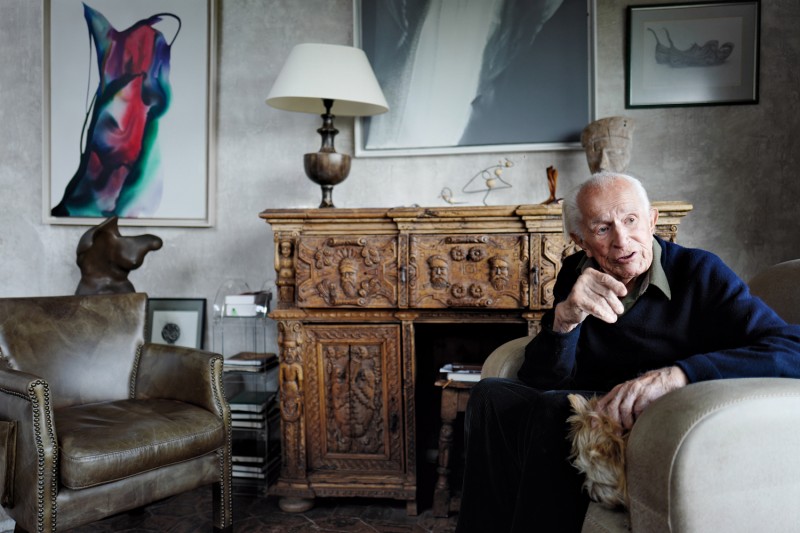The century of a photographer
The century of a photographer
January 23, 2016

DDD in his home in southern France, in October 2015. Lars Netopil, owner of the Leica Store in Wetzlar and DDD’s long-time friend, had the opportunity to speak with him. Photo: David Pitzer
In February 1943 Duncan joined the U.S. Marine Corps and became an army photographer and member of the only bomber squadron with embedded photographers reporting on the war in the West Pacific. From today’s perspective, the aerial photos taken at the time were captured in an incredible adventurous manner: Duncan and his camera took pictures suspended in a tight, plexi-glass tube under one of the wings of the bomber. “As I sweated, all of the moisture condensed on the inside of the tank and plexi-glass nose, and I had trouble wiping away the water so that I could make pictures,” Duncan explains in the photo book Yankee Nomad. He experienced the end of the war aboard the USS Missouri, where the Japanese signed their capitulation in 1945. That day saw the end of a terrible chapter in history but DDD’s great career still lay ahead of him.
Working as a photographer for Life magazine, Duncan captured key moments of the 20th century following the Second World War, embodying like no other the golden age of photo journalism. He photographed the 1946 Iran crisis, documented India’s declaration of independence in 1947, the founding of the State of Israel in 1948, the Korean War in 1950 and the creation of the Iron Curtain. The abbreviation of his name became the David Douglas Duncan brand mark that was recognized by colleagues and editors around the world. DDD was soon to play a role in the history of the Leica M. The Leica M3D was the result of his suggestions for improvement: an M3 constructed specifically for DDD accommodating a Leicavit rapid winder (LFI 1/2015).
Robert Capa introduced Duncan to Pablo Picasso, and when DDD moved to southern France in 1961, a deep friendship developed between the two men. The photographer published seven photo books about the painter.
In 1953, Duncan had documented the end of the French colonial administration in Indochina and he returned in 1967 to Vietnam on assignment for Life, to report on the escalating conflict there. Yet again his pictures circled the globe. In 1968 he documented the Democratic and the Republican presidential primaries, as well as the police assaults on the anti-war demonstrators that overshadowed them.
In the seventies, DDD produced the photo book Yankee Nomad, something of an autobiography with a selection of his best known pictures. In 2003, a more up-to-date edition appeared titled Photo Nomad. A comprehensive homage with some of his best-known images can be found in LFI 1/2016. Today, January 23, the photo nomad David Douglas Duncan is celebrating his 100th birthday. LFI congratulates him!

DDD in his home in southern France, in October 2015. Lars Netopil, owner of the Leica Store in Wetzlar and DDD’s long-time friend, had the opportunity to speak with him. Photo: David Pitzer